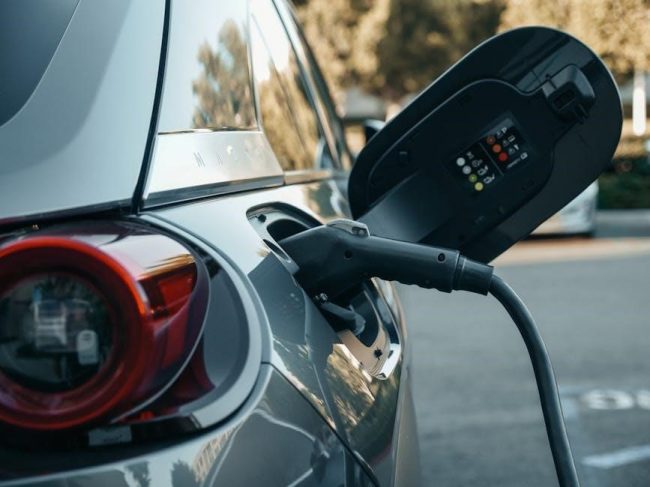RV generators are essential for reliable power during trips, but issues like starting failures, low power output, and overheating can disrupt your adventures. This guide provides a step-by-step approach to diagnose and resolve common problems, ensuring your generator runs smoothly and efficiently. Regular maintenance and understanding key components are crucial for long-term performance. By addressing these challenges, you can enjoy uninterrupted power and extend your generator’s lifespan.
1.1 Understanding the Importance of RV Generators
RV generators are crucial for providing reliable power during outdoor adventures, ensuring essential systems like lighting, heating, and appliances function smoothly. They offer independence from external power sources, making them indispensable for off-grid camping. A malfunctioning generator can disrupt your trip, highlighting the need for proper maintenance and troubleshooting skills. Understanding their importance helps prioritize regular checks and timely repairs, preventing unexpected failures. This section emphasizes why generators are vital for modern RVing and how their reliability directly impacts your travel experience. By grasping their significance, you can better appreciate the need for proactive care and effective troubleshooting strategies.
1.2 Purpose of This Troubleshooting Guide
This guide is designed to help RV owners identify and resolve common generator issues efficiently. It provides a structured approach to troubleshooting, covering initial checks, system testing, and advanced diagnostics. The goal is to empower users with practical knowledge, enabling them to address problems confidently. By following the outlined steps, readers can minimize downtime, reduce repair costs, and ensure their generator operates optimally. Whether you’re a novice or experienced RV enthusiast, this guide offers clear, actionable solutions to maintain reliable power and enhance your overall camping experience. Its comprehensive nature ensures that even complex issues are broken down into manageable, easy-to-follow steps.

Common RV Generator Components
RV generators consist of key components like the engine, fuel system, electrical circuitry, air filter, exhaust system, control panel, and sensors. Understanding these parts is crucial for effective troubleshooting and maintenance, ensuring reliable power supply during your trips.
2.1 Engine and Fuel System
The engine and fuel system are critical components of an RV generator. The engine powers the generator, while the fuel system ensures a steady supply of fuel. Proper engine maintenance includes regular oil changes, air filter cleaning, and spark plug replacements. The fuel system requires checking for leaks, clogs, or contamination. Issues like low fuel levels or dirty fuel filters can cause starting problems or reduced performance. Regular servicing of these components ensures optimal efficiency and prevents mechanical failures. Always refer to the manufacturer’s guidelines for specific maintenance recommendations to keep your RV generator running smoothly and reliably.
2.2 Electrical System and Circuit Breakers
The electrical system and circuit breakers are vital for distributing power from the generator to your RV’s appliances. Faulty wiring, tripped circuit breakers, or overloaded circuits can disrupt power supply. Regular inspection of wires for damage or corrosion is essential. Circuit breakers should be checked for proper function, ensuring they reset correctly after tripping; Overloaded circuits can cause frequent tripping, indicating the need for load redistribution. Testing voltage output using a multimeter helps identify electrical faults. Addressing issues promptly prevents damage to appliances and ensures safe operation. Always follow safety guidelines when working with electrical systems to avoid hazards.
2.3 Air Filter and Exhaust System
The air filter and exhaust system are critical for maintaining your RV generator’s performance. A dirty or clogged air filter can restrict airflow, leading to reduced power output or starting issues. Regularly inspect and clean or replace the air filter as recommended by the manufacturer. The exhaust system ensures harmful gases are safely vented away. Blockages or damage to the exhaust can cause overheating, which may damage the generator or pose safety risks. Always check for signs of wear, corrosion, or obstructions in the exhaust system. Proper maintenance of these components ensures efficient operation, prevents overheating, and prolongs the generator’s lifespan.
2.4 Control Panel and Sensors
The control panel and sensors are vital for monitoring and regulating your RV generator’s operation. Modern generators rely on sensors to detect fuel levels, temperature, and voltage, ensuring safe and efficient performance. Faulty sensors or a malfunctioning control panel can lead to incorrect readings or system shutdowns. Regularly inspect the control panel for damage or worn-out buttons. Clean any debris that may interfere with sensor accuracy. If issues persist, consult the owner’s manual or replace faulty sensors. Properly functioning sensors and a responsive control panel are essential for maintaining your generator’s reliability and preventing unexpected operational issues during your travels.

Common RV Generator Problems
RV generators often face issues like failure to start, low power output, overheating, and unusual noises. These problems stem from fuel, electrical, or mechanical faults, requiring timely fixes.
3.1 Generator Won’t Start
If your RV generator fails to start, begin by checking the fuel level, as low fuel is a common cause. Ensure the tank has enough fuel, as many generators stop running when fuel levels drop below a certain threshold. Next, inspect the battery connections and charge; a dead or weak battery can prevent the generator from starting. Also, verify the circuit breaker hasn’t tripped and that the choke and throttle settings are correct. A clogged air filter or faulty spark plug can also hinder startup. Addressing these issues systematically can help resolve the problem efficiently.
3.2 Low Power Output
Low power output from your RV generator can be caused by issues with the engine, electrical system, or fuel supply. Start by checking the fuel level and ensuring proper fuel delivery, as a clogged fuel filter or insufficient fuel can reduce power. Next, inspect the electrical system for overloaded circuits or damaged wiring, which can restrict output. Additionally, a malfunctioning voltage regulator or faulty capacitor may be contributing to the problem. It’s also important to ensure the generator is not overloaded beyond its capacity. Addressing these potential issues can help restore optimal power output and performance.
3.3 Overheating Issues
Overheating is a common issue with RV generators, often caused by blocked air filters, poor ventilation, or excessive load. Start by inspecting the air filter and ensuring it’s clean and free of debris. Next, check the cooling system, including the coolant level and circulation, to ensure proper heat dissipation. Additionally, verify that the generator is not operating in an enclosed space, as this can trap heat. If the issue persists, inspect the exhaust system for blockages or damage, such as a clogged muffler or bent pipes. Finally, ensure the generator is not overloaded, as this can strain the engine and cause overheating.
3.4 Unusual Noises
Unusual noises from your RV generator, such as knocking, rattling, or grinding sounds, can indicate mechanical issues. Start by identifying the source of the noise. A loose belt or worn-out pulley may cause rattling, while knocking sounds could signal worn piston rings or cylinder damage; Grinding noises often point to a malfunctioning alternator or bearings. Inspect the exhaust system for blockages or loose connections, as these can also produce unusual sounds. Ensure the generator is on a level surface, as misalignment can cause vibrations and noise. If the issue persists, consult the owner’s manual or contact a professional for further diagnosis and repair.
Step-by-Step Troubleshooting Guide
Start with basic checks like fuel level and battery connections. If issues persist, inspect air filters, spark plugs, and electrical systems. Follow a systematic approach to identify and resolve problems efficiently.
4.1 Initial Checks: Fuel Level and Battery
Begin troubleshooting by ensuring the fuel tank is adequately filled, as low fuel levels often trigger automatic shutdown. Check the battery connections for corrosion or looseness and confirm the battery is fully charged. A dead battery or poor connections can prevent the generator from starting. Always refer to the manufacturer’s guidelines for specific fuel requirements and battery maintenance. These simple checks can resolve many common issues before moving on to more complex diagnostics. Regular inspection of these components ensures reliable performance and minimizes unexpected failures during your RV adventures.
4.2 Testing Critical Systems: Fuel Delivery and Wiring
After initial checks, inspect the fuel delivery system for blockages or leaks. Ensure the fuel lines are clear and functioning properly, as clogged lines can restrict fuel flow. Next, examine the wiring and connections for damage, corrosion, or loose terminals. Use a multimeter to test for continuity and voltage drops in critical circuits. Faulty wiring or connectors can disrupt communication between components, leading to performance issues. Clean or replace any damaged wires and ensure all connections are secure. Proper fuel delivery and wiring are essential for the generator’s operation, and addressing these issues can resolve many underlying problems effectively.
4.3 Checking Air Filter and Spark Plug
A dirty or clogged air filter can restrict airflow, reducing your generator’s performance and efficiency. Remove and inspect the air filter, cleaning or replacing it if necessary. Next, check the spark plug for fouling or wear. A faulty spark plug can prevent the engine from starting or running smoothly. Remove the spark plug and inspect its condition; clean or replace it if needed. Ensure the spark plug gap is set correctly according to the manufacturer’s specifications. Proper maintenance of these components can resolve issues like low power output or difficulty starting the generator, ensuring optimal performance during your RV adventures.
4.4 Verifying Voltage Output and Grounding
Ensuring proper voltage output and grounding is critical for your RV generator’s performance and safety. Use a multimeter to measure the voltage at the generator’s output terminals, comparing it to the manufacturer’s specifications. Low or fluctuating voltage may indicate issues with the voltage regulator or wiring. Check the grounding system to ensure all connections are secure and free from corrosion. A faulty ground can lead to malfunctioning appliances and potential safety hazards. If voltage output is inconsistent or grounding issues are found, address them promptly to maintain reliable power supply and protect your RV’s electrical systems from damage.
Maintenance and Prevention Tips
Regular oil changes, filter replacements, and monthly generator exercises are vital for optimal performance. These practices prevent issues and extend the lifespan of your RV generator.
5.1 Regular Oil Changes and Filter Replacements
Regular oil changes and filter replacements are crucial for maintaining your RV generator’s health. Old oil can degrade engine performance and lead to overheating or mechanical failure. Replace the oil every 50-100 hours of use, using the manufacturer-recommended grade. Air and fuel filters should also be inspected and replaced as needed to ensure proper airflow and fuel delivery. A dirty filter can cause low power output and starting issues. Follow the schedule outlined in your owner’s manual to keep your generator running efficiently and prevent costly repairs.
5.2 Monthly Exercise and Load Testing
Monthly exercise and load testing are essential for maintaining your RV generator’s optimal performance. Running the generator under a typical load for 20-30 minutes helps prevent issues like stale fuel and battery drain. This routine also ensures the engine remains lubricated and ready for use. During load testing, monitor the generator’s voltage, frequency, and power output to ensure it meets specifications. If you notice any irregularities, such as low power or unusual noises, address them promptly. Regular exercise and testing not only extend the generator’s lifespan but also ensure reliability when you need it most during your travels.
Tools and Safety Precautions
Essential tools for RV generator troubleshooting include multimeters, wrenches, and spark testers. Always wear gloves and eyewear for safety. Ensure proper ventilation to avoid carbon monoxide risks and follow the manufacturer’s guidelines for safe operation.
6.1 Essential Tools for Troubleshooting
When diagnosing RV generator issues, having the right tools is crucial. A multimeter is key for voltage and electrical system checks. Pliers, screwdrivers, and wrenches are necessary for mechanical adjustments. A spark tester helps identify ignition problems. Fuel pressure gauges ensure proper fuel flow, while an air filter cleaning kit keeps your generator breathing smoothly. Don’t forget a circuit breaker tester for electrical faults. Always refer to your owner’s manual for specific tool recommendations. Proper tools help diagnose issues efficiently, saving time and preventing further damage to your RV generator.
6.2 Safety Guidelines for Working with Generators
Always prioritize safety when working on your RV generator. Ensure the generator is turned off and cool before starting repairs. Disconnect the battery to prevent accidental starts. Use protective gear like gloves and safety glasses. Never work on a wet surface or in damp conditions. Proper ventilation is crucial to avoid carbon monoxide buildup. Keep flammable materials away and ensure the area is well-ventilated. Follow all manufacturer guidelines and warnings. If unsure, consult a professional. Safety measures protect you and prevent further damage to your generator, ensuring a secure troubleshooting experience.
Advanced Troubleshooting Techniques
Advanced methods focus on diagnosing complex issues like electrical faults and mechanical failures. Utilize diagnostic tools and perform detailed system tests to identify root causes efficiently. Always follow repair procedures and safety protocols to ensure reliable power and prevent future breakdowns.
7.1 Diagnosing Electrical Faults
Diagnosing electrical faults in an RV generator involves a systematic approach. Start by testing voltage output at various points using a multimeter to identify discrepancies. Check circuit breakers and wiring for damage or wear, as tripped breakers or loose connections can disrupt power. Verify the grounding system to ensure proper current flow. Inspect the voltage regulator and capacitors for signs of failure. If issues persist, consult the service manual for specific troubleshooting charts and procedures. Addressing electrical faults promptly prevents further damage and ensures safe, reliable operation. Always follow safety guidelines when handling electrical components to avoid injury or additional malfunctions.
7.2 Identifying Mechanical Failures
Mechanical failures in RV generators often stem from engine or cooling system issues. Start by inspecting the engine oil level and quality, as low oil or contamination can cause seizures. Check fuel lines for blockages or leaks, and ensure the spark plug is clean and functional. Listen for unusual noises, such as knocking or grinding, which may indicate internal damage. Examine belts and hoses for cracks or wear. If the generator overheats, inspect the cooling system for blockages or faulty fans. Regular maintenance, like oil changes and filter replacements, can prevent many mechanical issues. Always consult the service manual for specific diagnostic steps.
Repairing Common Issues
Addressing common RV generator problems involves replacing faulty components like spark plugs, belts, or fuel filters. Ensure electrical connections are secure and test repairs thoroughly. Always consult the service manual for specific guidance to restore functionality effectively.
8.1 Fixing No Power Output
If your RV generator isn’t producing power, start by checking the circuit breakers and fuses. Reset or replace them if necessary. Ensure the fuel level is adequate, as low fuel can trigger a shutdown. Inspect the spark plug for wear or fouling and replace it if needed. Verify that the air filter is clean and free from debris. Check the voltage regulator and grounding system for any issues. Finally, test the electrical connections to ensure they are secure and not damaged. If the problem persists, consult the owner’s manual or contact a professional technician for further assistance.
8.2 Resolving Low Power Output
Low power output from your RV generator can often be traced to overloaded circuits or mechanical issues. First, check the load by prioritizing essential appliances to avoid overloading. Inspect the fuel system for restrictions, such as a clogged fuel filter, and ensure the fuel level is adequate. A dirty or clogged air filter can also reduce power output, so clean or replace it as needed. Additionally, a worn-out spark plug or faulty ignition system may contribute to low power. Finally, verify the generator’s voltage regulator and grounding system for proper function. Addressing these factors should restore optimal performance.
8.3 Addressing Starting Problems
Starting issues with your RV generator can often be resolved by checking the fuel level, as low fuel is a common cause. Ensure the tank has enough fuel, as many generators won’t start below a certain level. Next, inspect the battery and its connections for corrosion or a low charge. Verify that the main circuit breaker hasn’t tripped and that the choke is properly adjusted. A clogged fuel filter or faulty spark plug can also prevent starting. If the issue persists, consult the owner’s manual or test the ignition system for faults. Regular maintenance can help prevent these starting problems.
8.4 Solving Overheating Problems
Overheating is a common issue in RV generators, often caused by a blocked air filter, which restricts airflow. Regularly clean or replace the air filter to ensure proper cooling. Another cause is an overloaded circuit, so check your power usage and avoid overloading the generator. Inspect the exhaust system for blockages, as a clogged muffler can trap heat. Ensure the generator is in a well-ventilated area, away from direct sunlight or flammable materials. If overheating persists, inspect the cooling system for damage or leaks. Addressing these issues promptly can prevent damage to the engine and ensure safe operation. Always refer to the manual for specific guidance.

Referencing the Owner’s Manual
The owner’s manual is your primary resource for RV generator troubleshooting. It provides specific repair guidance, safety tips, and maintenance schedules tailored to your model. Always consult it first for accurate, manufacturer-recommended solutions to ensure safety and effectiveness. Regularly check for updates or supplements from the manufacturer to keep your knowledge current.
9.1 Understanding Service Manuals
Service manuals for RV generators are detailed guides that outline repair procedures, diagnostic steps, and maintenance schedules. They typically include diagrams, wiring schematics, and specifications for components. Understanding the manual is crucial for effective troubleshooting, as it provides manufacturer-specific instructions tailored to your generator model. These manuals often cover common issues, such as low power output or starting problems, and offer solutions. By familiarizing yourself with the manual, you can identify potential faults quickly and perform repairs confidently. Always refer to the manual before attempting any maintenance or repairs to ensure accuracy and safety. This knowledge enhances your ability to keep your generator running efficiently.
9.2 Following Manufacturer Guidelines
Adhering to manufacturer guidelines is essential for effective RV generator troubleshooting and maintenance. These guidelines provide specific instructions for your generator model, ensuring safety and optimal performance. They outline recommended maintenance schedules, such as oil changes and filter replacements, and specify correct tools and parts to use. Ignoring these guidelines can lead to improper repairs, void warranties, or even pose safety risks. Always consult the manual for steps tailored to your generator, and follow all safety precautions. By doing so, you ensure longevity and reliability of your generator, minimizing the risk of breakdowns during your travels. This approach guarantees adherence to industry standards and best practices.

Case Studies and Best Practices
Real-world examples highlight successful troubleshooting, such as resolving low power output by cleaning fuel filters or fixing starting issues with spark plug replacements. Best practices emphasize routine maintenance, ensuring reliability and extending generator lifespan.
10.1 Real-World Examples of Successful Troubleshooting
A common issue resolved was a generator failing to start due to low fuel levels. By refilling the tank and ensuring proper fuel flow, the generator restarted successfully. Another example involved addressing low power output by identifying and replacing a faulty voltage regulator, restoring full functionality. These cases demonstrate how systematic troubleshooting can quickly resolve issues, minimizing downtime during trips. Regular maintenance and prompt issue identification are key to maintaining reliable generator performance.
10.2 Best Practices for Long-Term Generator Health
Regular maintenance is key to ensuring long-term reliability. Schedule annual professional inspections and perform monthly checks of oil, filters, and spark plugs. Exercise your generator under load for 20-30 minutes every month to prevent stale fuel and component degradation. Avoid overloading the system, as this can cause permanent damage. Store your RV in a dry, well-ventilated area during off-seasons, and consider draining fuel or using a stabilizer to prevent corrosion. Keep the air filter clean and ensure proper ventilation to prevent overheating. By following these practices, you can extend your generator’s lifespan and ensure consistent performance during your travels.
